Podcast: Play in new window | Download
Subscribe: Apple Podcasts | RSS
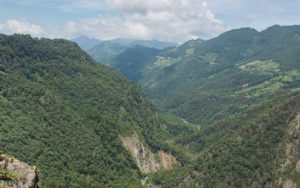 July 29, 1977 was an ordinary morning for Miguel Cruz who owned a small plot of land outside the village of Jopala in the northern part of the Mexican state of Puebla. He got up, had a small breakfast and left his house to start his daily activities. Suddenly, he began hearing loud thundering sounds overhead even though it wasn’t supposed to rain that day.
July 29, 1977 was an ordinary morning for Miguel Cruz who owned a small plot of land outside the village of Jopala in the northern part of the Mexican state of Puebla. He got up, had a small breakfast and left his house to start his daily activities. Suddenly, he began hearing loud thundering sounds overhead even though it wasn’t supposed to rain that day.
Cruz told an investigator: “Then I looked up, and I saw those burning pieces falling from the sky. They looked very hot. One piece fell very close and I even thought it was going to hit my head. When I determined that the piece cooled off, I picked it up.”
That fragment of red-hot metal had even damaged a concrete floor when it fell from the sky. When the piece was cold enough, Cruz wrapped it in some sacks and took it to the church of Jopala to give it to the priest. The priest did not want to keep it and handed it over to the municipal president Don Antonio Hernández García, who kept it until he could figure out what to do with it. Other people from Jopala and the nearby towns began finding other fragments of metal related to this same event. Was this somewhat remote part of Puebla part of some debris field of the breakup of some extraterrestrial craft?
The northern part of the Mexican state of Puebla contains some of the most inaccessible and little-visited country in all of Mexico. Parts of the state are so remote that they only began to receive European explorers for the first time in the mid-1800s. This heavily forested and mountainous area is very reminiscent of the Pacific Northwest of the United States. As a curious aside, this region of Mexico is home to a legendary creature that is very similar to the North American bigfoot called the Cuatlacas. For more information about the Cuatlacas, please see Mexico Unexplained episode number 105.https://mexicounexplained.com//el-cuatlacas-mexican-bigfoot/ In this far-off part of Puebla on that July day in 1977, something did fall out of the sky. The humble Miguel Cruz was not the only witness to the aerial lights display and he was not the only person to find wreckage of what appears to have been a UFO. According to a Mexican publication at the time, an apple seller from San Francisco Ixtacamaxtitlán who went into the towns and villages to sell his produce spread the word that he had seen an actual flying saucer crash. This generated interest from locals who wanted to see if they could find scraps of metal from the wreckage to sell as salvage. Many people from the towns of Bienvenido and Jopala did find strange pieces of metal in the forest. Besides the many eyewitness accounts, on the morning of July 29, 1977 a radar station in the Pacific coastal town of Zihuatanejo tracked an unknown object headed to the northeast. Later, the Benito Juarez International Airport in Mexico City picked up 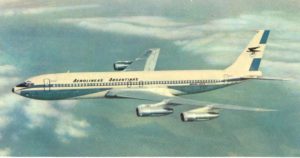 the same blip on their radar. In the air that morning, the crew of Aerolineas Argentinas Flight 371 flying their Boeing 707 over the countryside of Oaxaca called in the object. The airport control tower confirmed their sighting. Strangely enough, the object was also caught on film. Someone had told Mexican film director Abel Salazar that there was an unusual object in the sky. Salazar was on location filming the movie “Picardía Mexicana” and instructed his cameramen to point their cameras upward. On film, the UFO appears to be a large sparkler crossing the sky. Many of the movie crew just assumed that what they were filming was a comet. By the time this strange craft reached Puebla, some witnesses had reported three objects overhead, not just one. Either by explosion or simple break-up, the object or objects eventually crashed in the remote Sierra Norte of the state.
the same blip on their radar. In the air that morning, the crew of Aerolineas Argentinas Flight 371 flying their Boeing 707 over the countryside of Oaxaca called in the object. The airport control tower confirmed their sighting. Strangely enough, the object was also caught on film. Someone had told Mexican film director Abel Salazar that there was an unusual object in the sky. Salazar was on location filming the movie “Picardía Mexicana” and instructed his cameramen to point their cameras upward. On film, the UFO appears to be a large sparkler crossing the sky. Many of the movie crew just assumed that what they were filming was a comet. By the time this strange craft reached Puebla, some witnesses had reported three objects overhead, not just one. Either by explosion or simple break-up, the object or objects eventually crashed in the remote Sierra Norte of the state.
As the film footage and eyewitness accounts quickly made it to the press, the event immediately drew interest from local and international UFO researchers. The first formal investigation was made by reporters Fernando J. Téllez, Fausto Rosales and Pablo Latapí Ortega. Author Alfonso Salazar Mendoza accompanied the three reporters and eventually wrote a book about the incident titled, OVNI Estrellado en Puebla, or in English, The UFO Crash in Puebla. Over the course of a few months the investigators made 13 expeditions to different points, in what they called Zone “A” and Zone “B”. Zone A included sites originally visited by the curious, reporters and UFO seekers such as Tateno, Libres, Zaragoza and four other towns. Only two places made up Zone B: The town of Filomeno Mata in the state of Veracruz and Jopala, Puebla, the site where the first physical evidence of the UFO was found by Miguel Cruz. Alternate areas included sites of the Ahuacatlán, Camotepec, Zacatlán and Chignahuapan mountains, as well as various places in the state of Tlaxcala, including the Matiacueye Mountain and several intermediate points. Over the course of the investigation, the team found several scraps of metal allegedly to have been from the crashed object and they gathered up the many stories from the locals. The stories ranged from the highly descriptive to the absurdly fanciful.
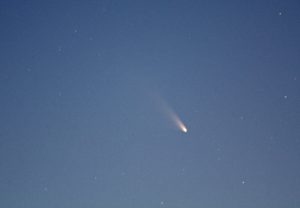 The team of reporters took one of the debris samples to a lab and did not inform the lab of the sample’s origins. The metallurgists who tested the metal piece came up with some interesting findings. It was an extremely durable steel-silicon-chromium alloy that was very close to an alloy of Spanish origin used to manufacture high resistance industrial springs. The metallurgists said it was the first time they had seen something like that in the form of a sheet.They called it “a rare piece, for a rare use.”
The team of reporters took one of the debris samples to a lab and did not inform the lab of the sample’s origins. The metallurgists who tested the metal piece came up with some interesting findings. It was an extremely durable steel-silicon-chromium alloy that was very close to an alloy of Spanish origin used to manufacture high resistance industrial springs. The metallurgists said it was the first time they had seen something like that in the form of a sheet.They called it “a rare piece, for a rare use.”
In late 1977, one keen researcher noted that on July 17, 1977 the Soviet Union launched the Cosmos 929 satellite from the Baikonur Cosmodrome in Kazakhstan. The third stage of the rocket that carried the satellite re-entered the earth’s atmosphere on July 29, 1977, the very day of the crash of the alleged Puebla UFO. When asked by Mexican reporters, the Soviet Embassy in Mexico City offered no comment about the incident, nor did they offer any specifics about their space program. The Mexican government did not formally investigate this case, at least publicly. The unsanctioned “official” story of what happened in the skies over Puebla on that July day was clean and simple: The fragments that fell to earth were mere pieces of Soviet space hardware. It was all just space junk. Case closed.
What of the stories from the locals? The reporters previously mentioned who conducted an extensive boots-on-the-ground investigation did their best to talk to all the eyewitnesses. Many of the people of the remote Sierra Norte of Puebla are native speakers of Totonac, so the investigators faced a bit of a language barrier, with younger family members often called in to help with translation to Spanish. One eyewitness said he saw an actual flying saucer on the ground, crashed in the forest. Three small beings approximating The Greys of UFO lore exited the wreckage, staggering and appearing disoriented before falling to the ground. An often-repeated story in the mountains was that of a female American graduate student who was in the area doing field 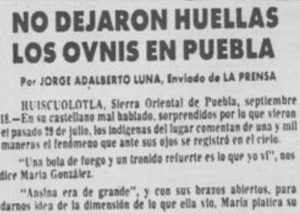 research when the UFO crashed near her. When the woman went to the craft, a group of small beings emerged, immobilized her, and took her aboard. In every version of the story, the woman’s boyfriend was a US Marine, but he was not with her. The investigators tried to track down this mysterious American grad student but had no luck. A story in a French UFO magazine which covered the events of Puebla claimed the Mexican military, with the help of the Americans, created a restricted zone at the site of the debris field to gather up all the wreckage and to spirit away any bodies or survivors. The investigators could not confirm this with the locals or with the Mexican government. If there were bodies of aliens in crashed saucer wreckage, what happened to them? In one story told by the locals, the bodies were taken away by townsfolk and burned. In another story, a woman in a village claimed she used the bright red blood of the dead extraterrestrials in the paints she used to decorate her pottery. In the most bizarre story of all, the aliens from the ship, who looked very human, survived the crash. Not only were they uninjured, the spacemen joined a soccer match in one of the local towns and used their mastery of anti-gravity techniques to do unimaginable things with the soccer ball to ensure a hearty victory for their team. It’s unknown whether the people who were telling these stories were just repeating what they had heard, or if much of what was being said was lost in translation, or if the locals were just playing jokes on the investigators by making up tall tales.
research when the UFO crashed near her. When the woman went to the craft, a group of small beings emerged, immobilized her, and took her aboard. In every version of the story, the woman’s boyfriend was a US Marine, but he was not with her. The investigators tried to track down this mysterious American grad student but had no luck. A story in a French UFO magazine which covered the events of Puebla claimed the Mexican military, with the help of the Americans, created a restricted zone at the site of the debris field to gather up all the wreckage and to spirit away any bodies or survivors. The investigators could not confirm this with the locals or with the Mexican government. If there were bodies of aliens in crashed saucer wreckage, what happened to them? In one story told by the locals, the bodies were taken away by townsfolk and burned. In another story, a woman in a village claimed she used the bright red blood of the dead extraterrestrials in the paints she used to decorate her pottery. In the most bizarre story of all, the aliens from the ship, who looked very human, survived the crash. Not only were they uninjured, the spacemen joined a soccer match in one of the local towns and used their mastery of anti-gravity techniques to do unimaginable things with the soccer ball to ensure a hearty victory for their team. It’s unknown whether the people who were telling these stories were just repeating what they had heard, or if much of what was being said was lost in translation, or if the locals were just playing jokes on the investigators by making up tall tales.
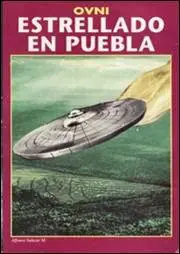 The alleged flying saucer crash at Puebla may be connected to a paranormal hotspot located about 50 miles south of the debris field. Laguna de Alchichica, situated on the border of the states of Puebla and Veracruz, is a small salty lake inside a collapsed volcanic cone. For years, people have seen UFOs enter and leave the lake, which is rumored to either be bottomless or to have a large subterranean tunnel that connects it with the Gulf of Mexico. Also, people have reported strange creatures in and around the lake, including the Tlanchana, a mermaid-like serpent woman, a legend that dates to before the arrival of the Spanish. For more on this legend, please see Mexico Unexplained episode number 47. https://mexicounexplained.com//la-tlanchana-mexican-mermaid-legends/ In a 2003 radio interview, UFO experiencer Miguel Angel Munguía Limón described his extraterrestrial encounter at Alchichica Lake. He stated that 3 beings, 2 male and one female, approached him while he was on the shores of the lake. They were somewhat luminescent and somewhat transparent. They belonged to the race of Nordics in UFO lore, the tall and blonde aliens who are friendlier than the more nefarious Greys. The three beings then boarded a disc-shaped craft which, like them, was also vaguely luminescent and transparent. The disc disappeared into the lake. Munguía asked people around Alchichica if they had seen similar things, and everyone he spoke with had stories about metallic craft plunging into the lake or emerging from it. Many locals believe that Lake Alchichica is home to a very active extraterrestrial base, located somewhere in its depths. Is the 1977 crash somehow connected to this UFO hotspot?
The alleged flying saucer crash at Puebla may be connected to a paranormal hotspot located about 50 miles south of the debris field. Laguna de Alchichica, situated on the border of the states of Puebla and Veracruz, is a small salty lake inside a collapsed volcanic cone. For years, people have seen UFOs enter and leave the lake, which is rumored to either be bottomless or to have a large subterranean tunnel that connects it with the Gulf of Mexico. Also, people have reported strange creatures in and around the lake, including the Tlanchana, a mermaid-like serpent woman, a legend that dates to before the arrival of the Spanish. For more on this legend, please see Mexico Unexplained episode number 47. https://mexicounexplained.com//la-tlanchana-mexican-mermaid-legends/ In a 2003 radio interview, UFO experiencer Miguel Angel Munguía Limón described his extraterrestrial encounter at Alchichica Lake. He stated that 3 beings, 2 male and one female, approached him while he was on the shores of the lake. They were somewhat luminescent and somewhat transparent. They belonged to the race of Nordics in UFO lore, the tall and blonde aliens who are friendlier than the more nefarious Greys. The three beings then boarded a disc-shaped craft which, like them, was also vaguely luminescent and transparent. The disc disappeared into the lake. Munguía asked people around Alchichica if they had seen similar things, and everyone he spoke with had stories about metallic craft plunging into the lake or emerging from it. Many locals believe that Lake Alchichica is home to a very active extraterrestrial base, located somewhere in its depths. Is the 1977 crash somehow connected to this UFO hotspot?
On July 29, 1977 something fell from the skies over Puebla causing much excitement and speculation. To this day, this alleged saucer crash remains a mystery and one of the most bizarre unsolved UFO cases in all of Mexico
REFERENCES
¡IMPACTO! La historia del Caso Puebla: 1977: Un ovni cae en la Sierra de Puebla eBook by Hector Chavarria. In Spanish, available here: https://amzn.to/2KuvY60
